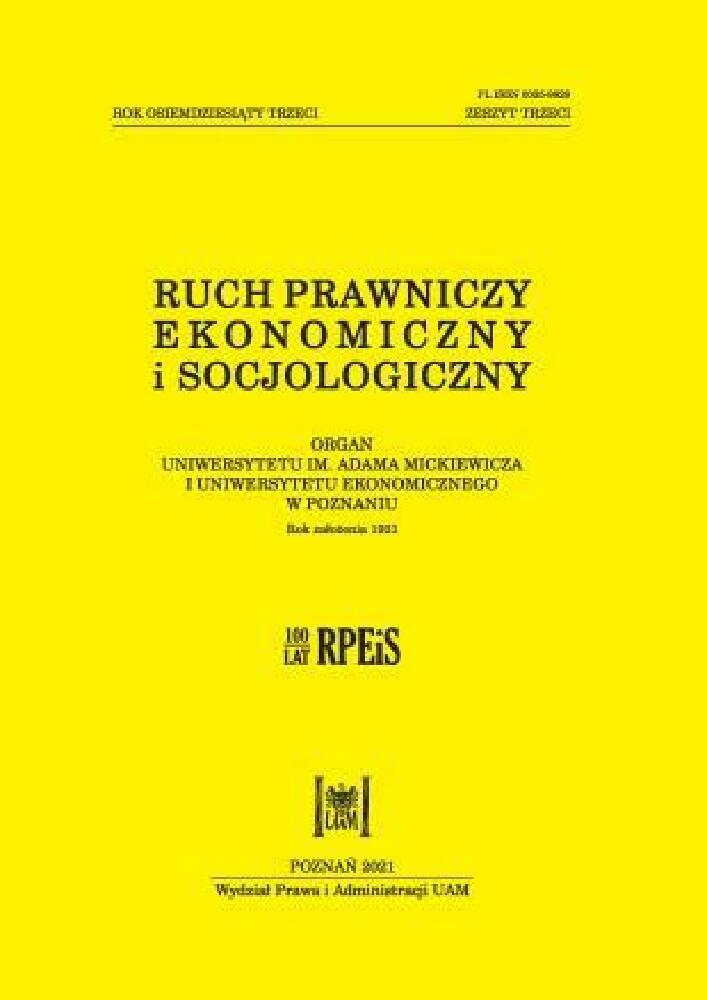Abstract
Trade credit is an important way of financing enterprises in Poland, yet it has also received little attention from researchers. In this article, the authors analyse what factors determine the choice of trade credit made by enterprises in Poland – as a source of financing and a form of receivables. In addition, the authors diagnose the existence of so-called individual effects that differentiate individual enterprises in terms of the general scale of trade credit application. The research conducted by the authors and described in this article indicates the relation between such effects and sector and asset structure.
References
Adams, P.D., Wyatt, S.B., Kim, Y.H. (1992). A contingent claims analysis of trade credit. Financial Management 21(3): 95–103.
Atanasova, C. (2007). Access to Institutional Finance and the Use of Trade Credit. Financial Management 36(1): 49–67.
Becella, A. (2019). Kredyt kupiecki w Polsce – determinanty popytowe i podażowe. Warszawa: CeDeWu.
Beck, N., Katz, J. (1995). What to do and what not to do with time-series cross-section data. American Political Science Review 89: 634–647.
Biczyński, S., Miedziński, B. (red.) (1991). Słownik ekonomiki i organizacji przedsiębiorstwa. Warszawa: Państwowe Wydawnictwo Ekonomiczne.
Brealey, R.A., Myers, S.C. (1999). Podstawy finansów przedsiębiorstw. Tom 2. Warszawa: Wydawnictwo Naukowe PWN.
Chong, B., Yi, H. (2011). Bank loans, trade credits, and borrower characteristics: theory and empirical analysis. Asia-Pacific Journal of Financial Studies 40(1): 37–68.
Cuñat, V. (2007). Trade credit: suppliers as debt collectors and insurance providers. The Review of Financial Studies 20(2): 491–527.
Podstawka, M. (red.) (2017). Finanse. Instytucje, instrumenty, podmioty, rynki, regulacje. Warszawa: Wydawnictwo Naukowe PWN.
Gęsicki, Ł., Gęsicki, M. (red.) (1996). Słownik terminów ekonomiczno-prawnych. Łódź: Interfart.
Kus, B. (2012). Financialisation and income inequality in OECD nations: 1995–2007. The Economic and Social Review 43(4): 477–495.
Lee, Y.W., Stowe, J.D. (1993). Product risk, asymmetric information and trade credit. Journal of Financial and Quantitative Analysis 27(2): 285–300.
Łuczka, T. (1998). Kredyt od dostawcy jako źródło pozabankowego finansowania przedsiębiorstwa. Problemy ogólne. Ruch Prawniczy, Ekonomiczny i Socjologiczny 62(2): 143–157.
Marzec, J., Pawłowska, M. (2011). Racjonowanie kredytów a substytucja między kredytem kupieckim i bankowym – badania na przykładzie polskich przedsiębiorstw. Narodowy Bank Polski. Materiały i Studia 261.
Mian, S.L., Smith, C.W. (1992). Accounts receivable management policy: theory and evidence. The Journal of Finance 47(1): 169–200.
Nowak, E. (red.) (1996). Leksykon rachunkowości. Warszawa: Wydawnictwo Naukowe PWN.
Schwartz, R.A. (1974). An economic model of trade credit. Journal of Financial and Quantitative Analysis 9(4): 643–657.
Schwartz, R.A., Whitcomb, D. (1978). Implicit transfers in the extension of trade credit, [w:] K.E. Boulding, T.F. Wilson, The Channels of Redistribution through the Financial System. Preager Special Studies. New York: 191–208
Smith, J.K. (1987). Trade credit and information asymmetry. The Journal of Finance 42: 863–872.
Summers, B., Wilson, N. (1999). An empirical investigation of trade credit use. Credit Management Research Centre. Working Paper.
Summers, B., Wilson, N. (2002). An empirical investigation of trade credit demand. International Journal of the Economics of Business 8(2): 257–270.
Summers, B., Wilson, N. (2003). Trade credit and customers relationship. Managerial and Decision Economics 24(6/7): 439–455.
Zawadzka, D. (2009). Determinanty popytu małych przedsiębiorstw na kredyt handlowy. Identyfikacja i ocena. Poznań: Wydawnictwo Uniwersytetu Ekonomicznego w Poznaniu.
License
Copyright (c) 2021 WPiA UAM

This work is licensed under a Creative Commons Attribution-NonCommercial-NoDerivatives 4.0 International License.





